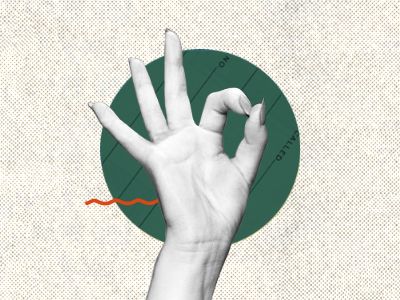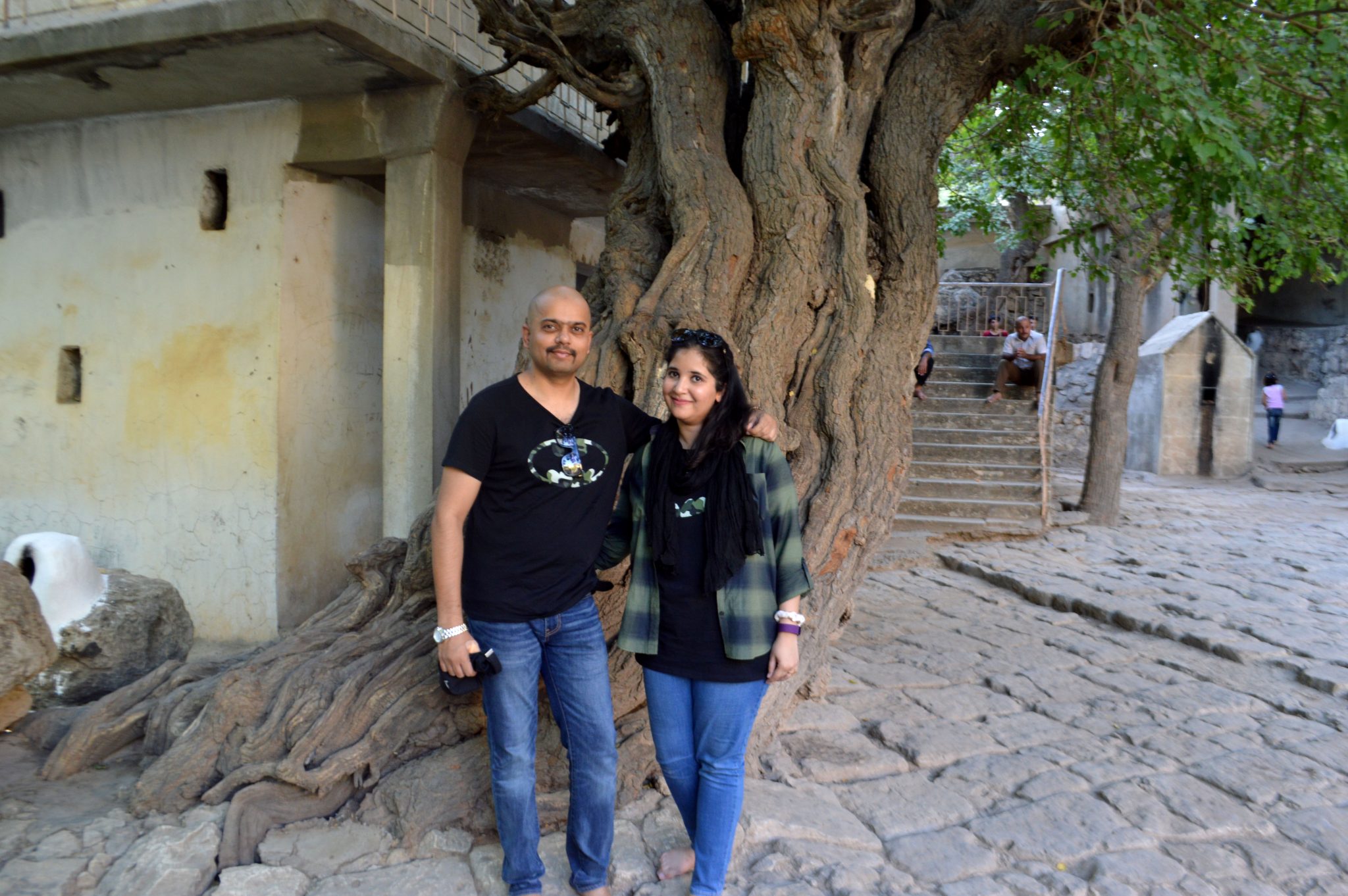
This weekend, the Husband and I went to a very unusual place: Lalish, Iraq, which has one of the oldest temple of the Yazidis.
You may have first heard about Yazidis when in August 2014, ISIS prosecuted countless number of them because they are considered “devil worshipers” (by some radical groups), which can only be defined as a pre-planned campaign to wipe out as many of them as possible. To say whether they are devil worshipers or not is not the scope of this article. We will share some interesting things about them, as well as photos of their holiest and oldest temples.
Living in Iraq has certainly given us a unique way of looking at Islam and how different people and their culture/religion merge together. Yazidis are one such group, a relatively harmless group, and for most people around the world, they came to know about this group in their worst plights.
Who Are Yazidis?
The Yazidi people traditionally live in northern Iraq, particularly around the Nineveh and Dohuk provinces with large communities in Sinjar and Shekhan, where a number of their holy sites are located.
If you ask Yazidis whether they are Kurdish, they very vehemently disagree with that. They do not want to be identified as Kurdish. They think of themselves as an entirely separate group. [1]
For More Reading:
And that feeling of separation from Kurds I think was significantly exacerbated by the fact that on August 3, 2014, when ISIS came in to slaughter them, the Kurdish military forces – the Peshmerga – pulled out entirely in the middle of the night, not warning any of them, and left them at the mercy of ISIS.”
Religiously, the Kurds are Muslim, mainly Sunni or Shia, while the Yazidis follow their own religion, Yazidism. [1]
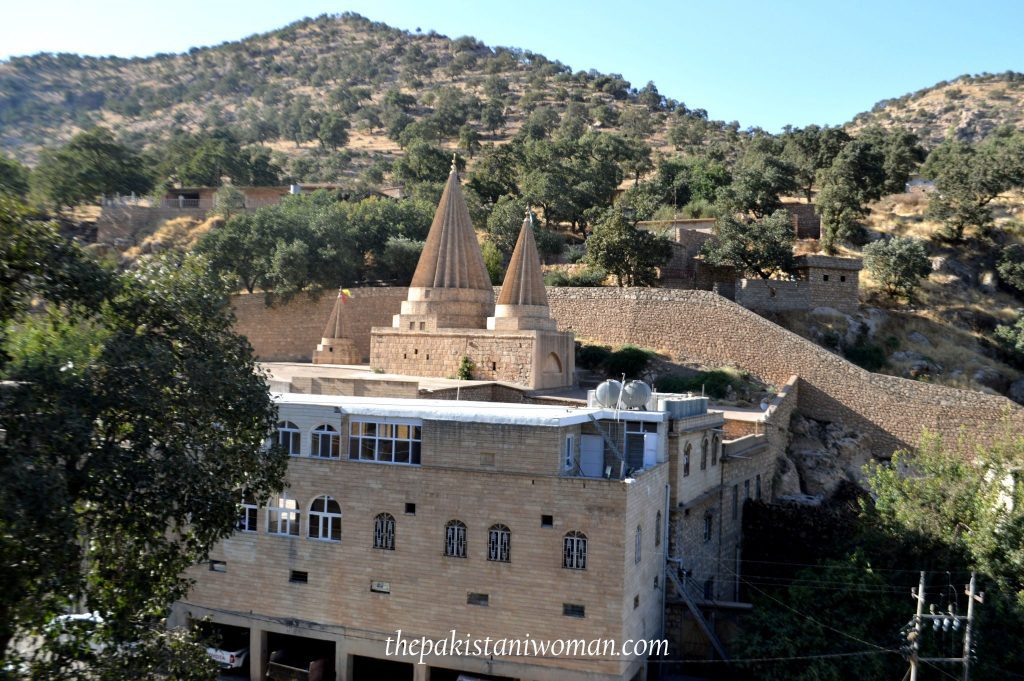
Conical roofs characteristic of Yazidi sites mark the tomb of Sheikh Adi ibn Musafir in Lalish
What Is Yazidism?
Yazidis believe Yazidism is the oldest religion in the world and it incorporates aspects of Islam, Christianity and, as well as elements unique to Yazidism. Yazidis believe God made seven angels to help Him create the world and Adam and Eve.
He asked the angels to bow down before Adam, but one angel refused and fell to earth and became a peacock, known as Melek Tawwus or the Peacock Angel, who God eventually put in charge of the angels and the humans on earth. It is this story of a fallen angel as a figure of worship that has led to the persecution of the Yazidis.
Both Islamic and Christian traditions show the devil as a fallen angel, which leads many people to believe the Yazidis are devil worshippers. Yazidis do not believe in the devil or that he is the source of evil, but that “God only provides good for humanity and evil comes from the humans”. [1]
Here are a few photos we took at this temple. Enjoy!
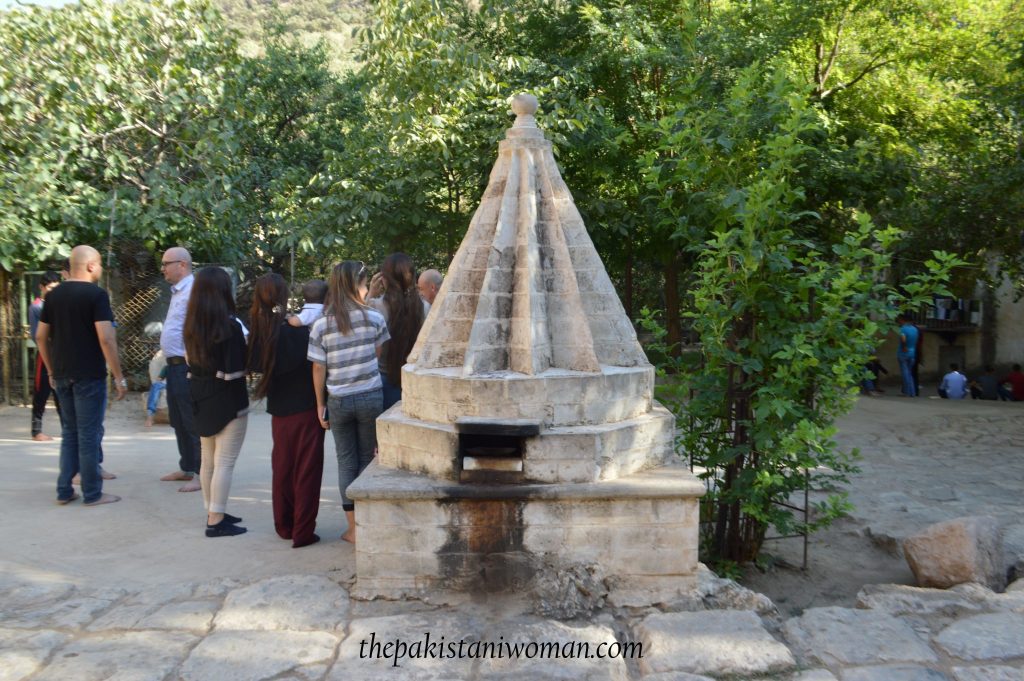
These cone shaped monuments dominate the area of Lalish. This smaller version of the conical structure is housed inside the tomb of Sheikh Adi ibn Musafir.
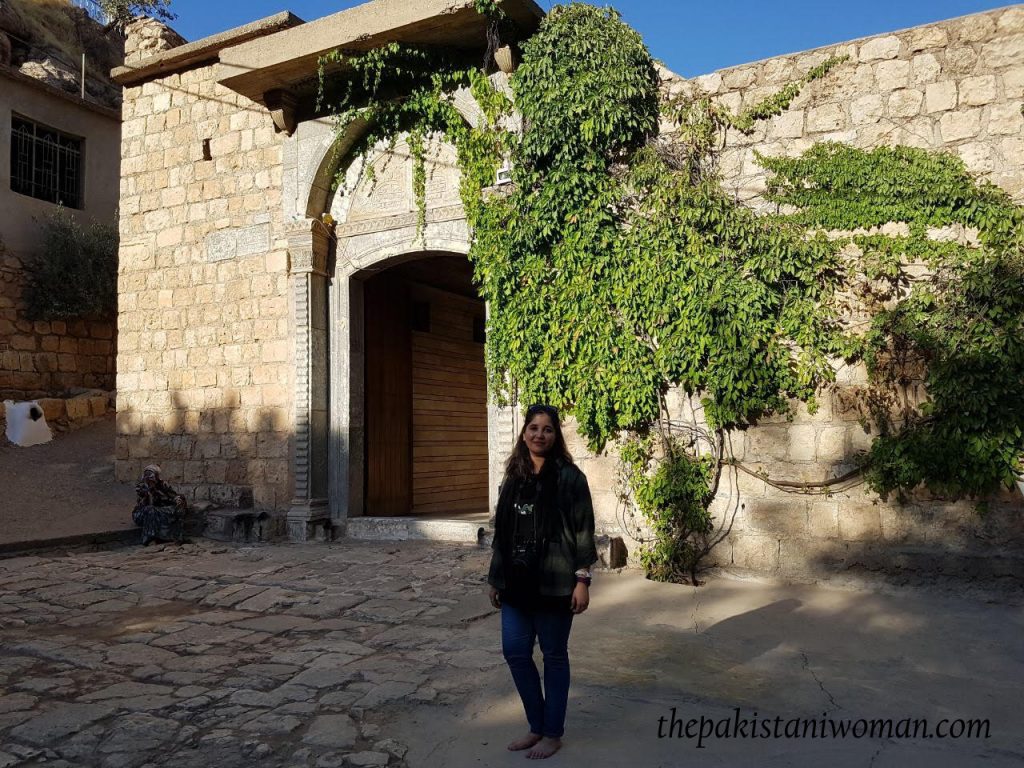
Entrance to the tomb of Sheikh Adi ibn Musafir
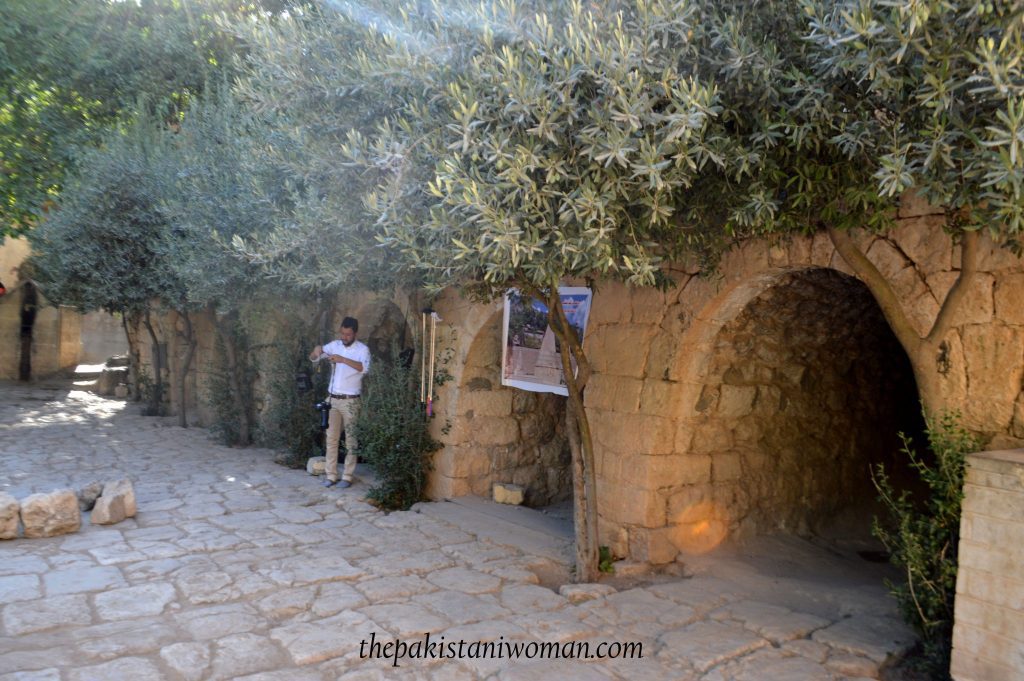
Shops situated near the entrance, which are no longer in use but preserved for tourists to see.
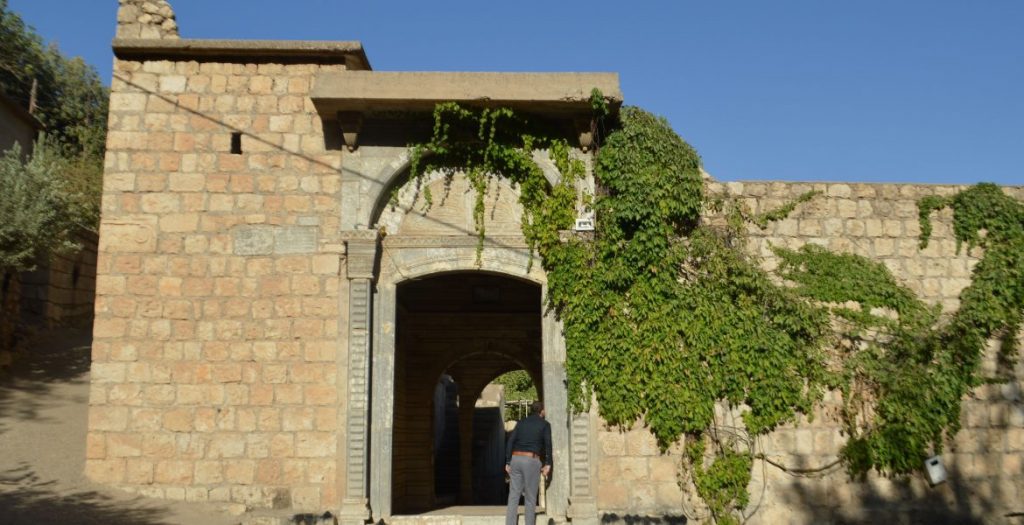
A Yazidi devotee kisses the entrance of the tomb of Sheikh Adi ibn Musafir. It is forbidden to touch any steps in the doorway with your feet because devotees kiss it as a display of religious fervor.
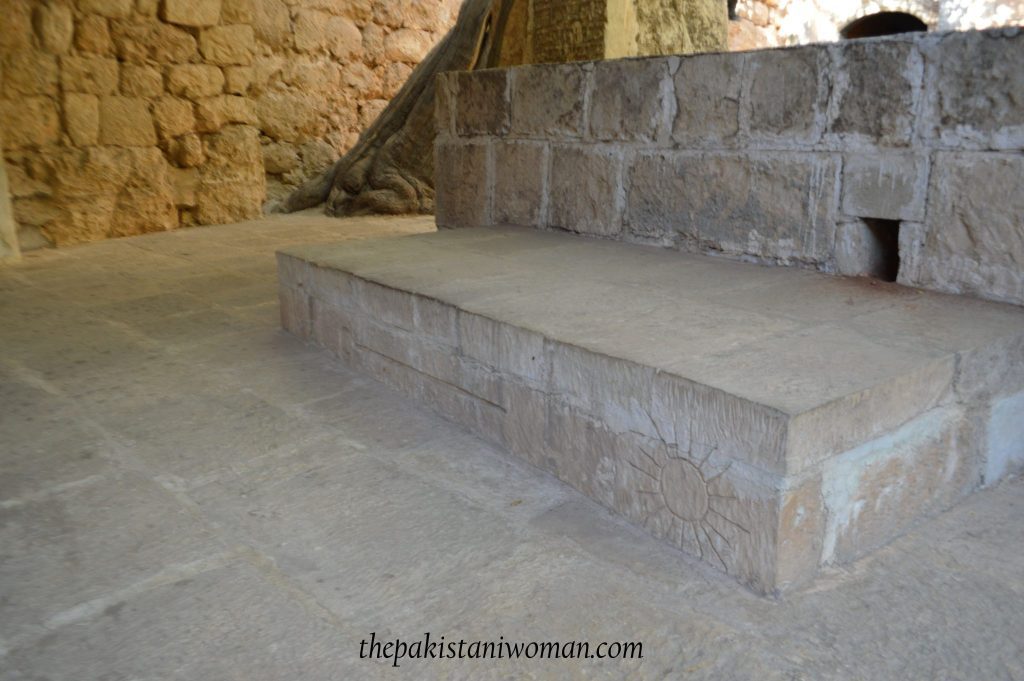
The place where Sheikh Adi ibn Musafir used to sit and deliver lectures. The sun symbolizes peace and harmony.
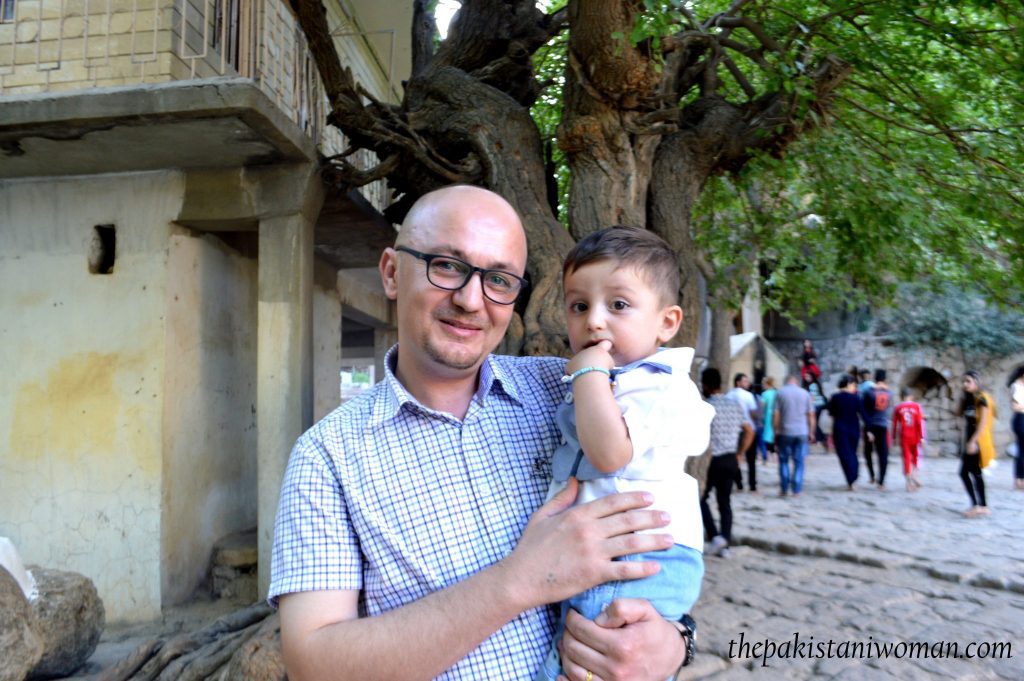
We made a new friend, Mr Dakhel, who very kindly showed us around the temple and explained everything.
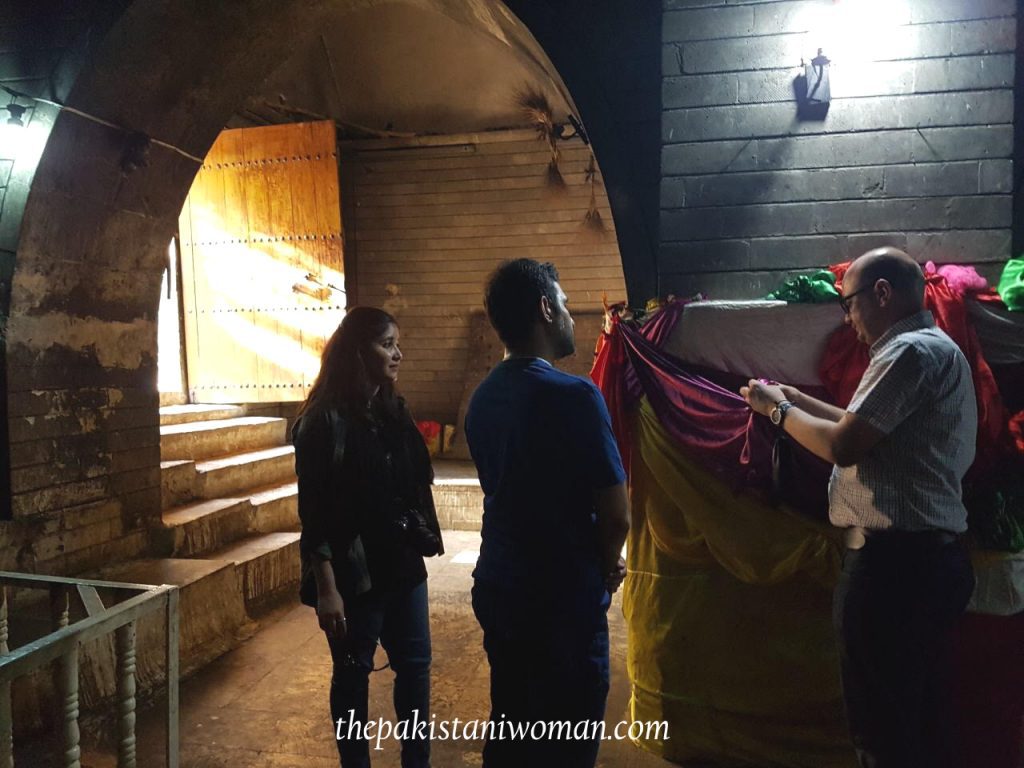
The Yazidis make a wish and tie knots in these colorful pieces of cloths tied around pillars inside the tomb of Sheikh Adi ibn Musafir. Mr Dakhel shows us how they do it.
There is a very fascinating custom in this temple. A spot has been fixed for the granting of wishes. There is a white big dot, very high up a wall. The person who wants his or her wish granted will stand in front of that spot at a distance, make a wish, close eyes and then throw one of these shiny cloths shown in the photo above. If the cloth reaches up to that white dot, your wish will be granted. You have three chances to reach it. And when you do, the other devotees in the room will clap and celebrate for you. It was certainly fun to watch.
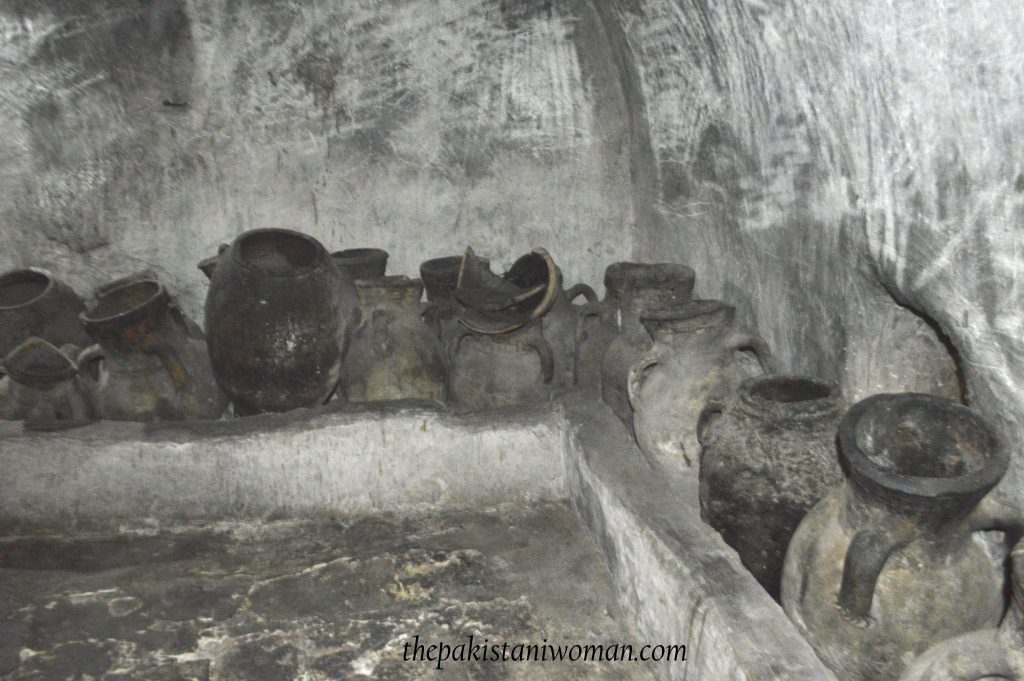
The tomb contains many pots of oil which are said to be there since the tomb was first created. Every night these oil pots are burnt for the light to spread and bring peace.
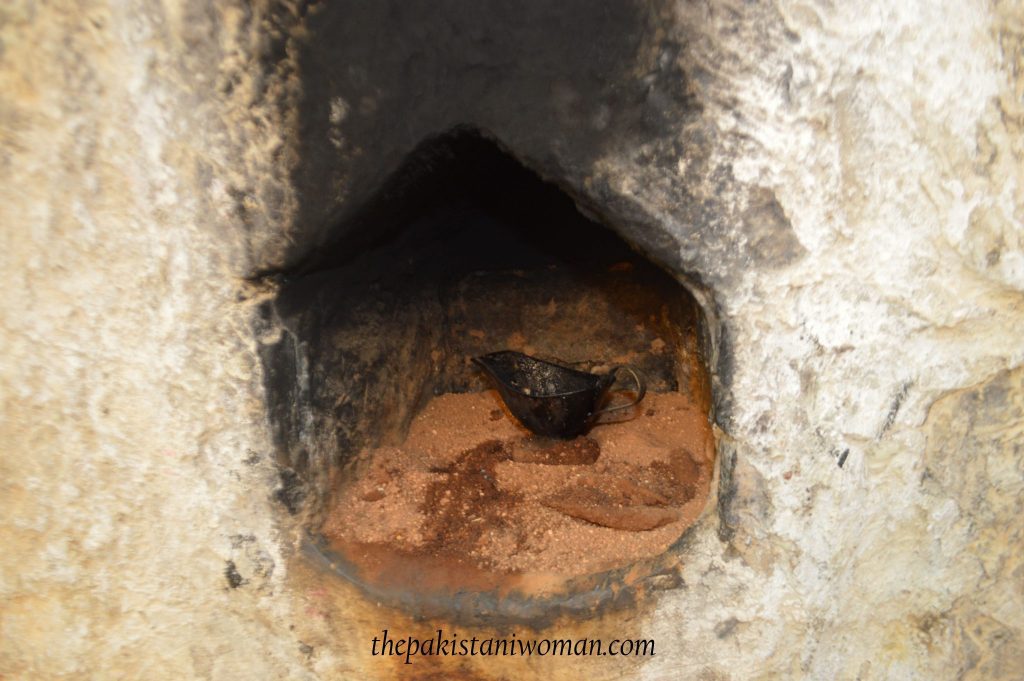
An oil lamp burns outside the tomb gates at night, as a symbol of peace and tranquility.
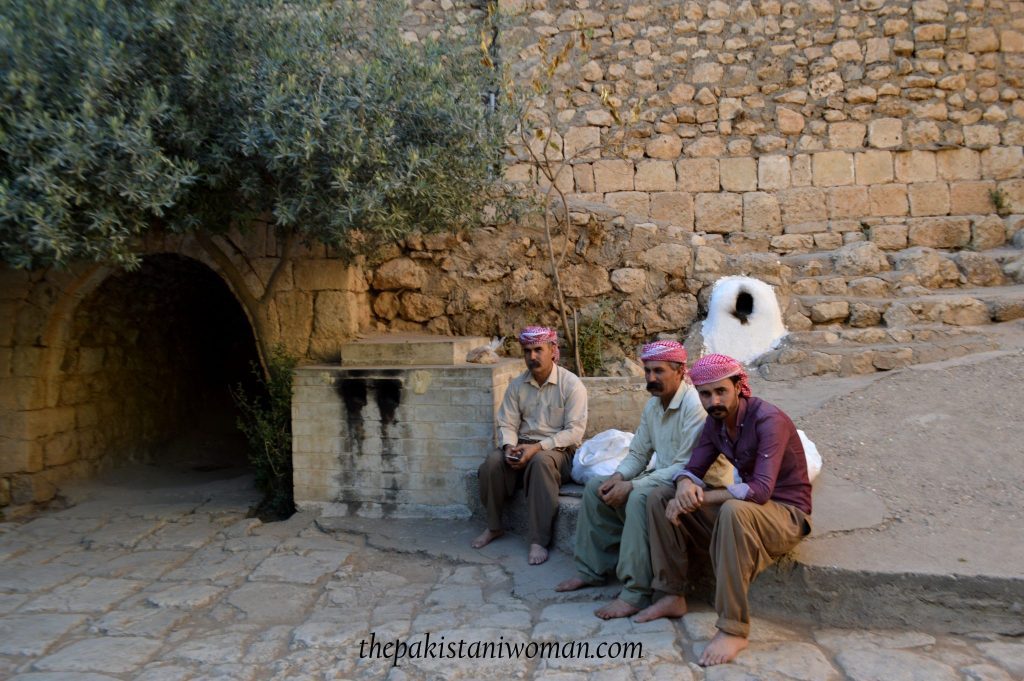
Some Iraqi Yazidis sit outside the tomb entrance, exhausted from cleaning the area of the tomb. Many people choose to volunteer for the cleaning task as a display of their love and devotion.
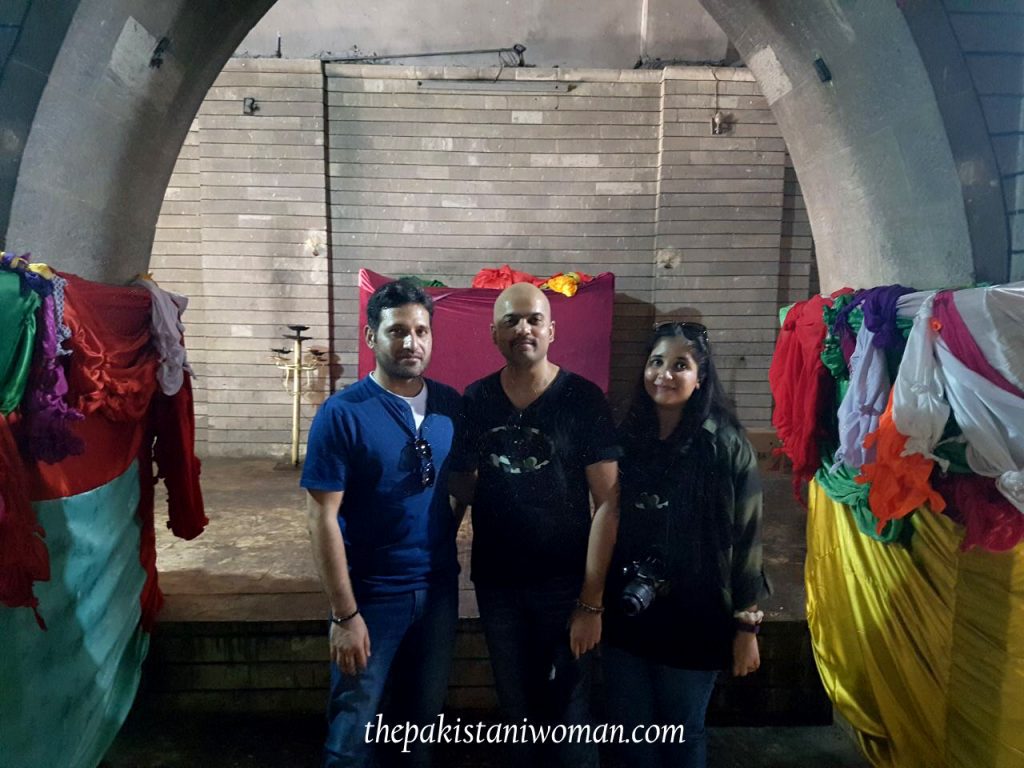
With a brother-like-friend, the Husband and I, as we get clicked inside the tomb of Sheikh Adi ibn Musafir, in Lalish, Iraq, as a keepsake and a memory.
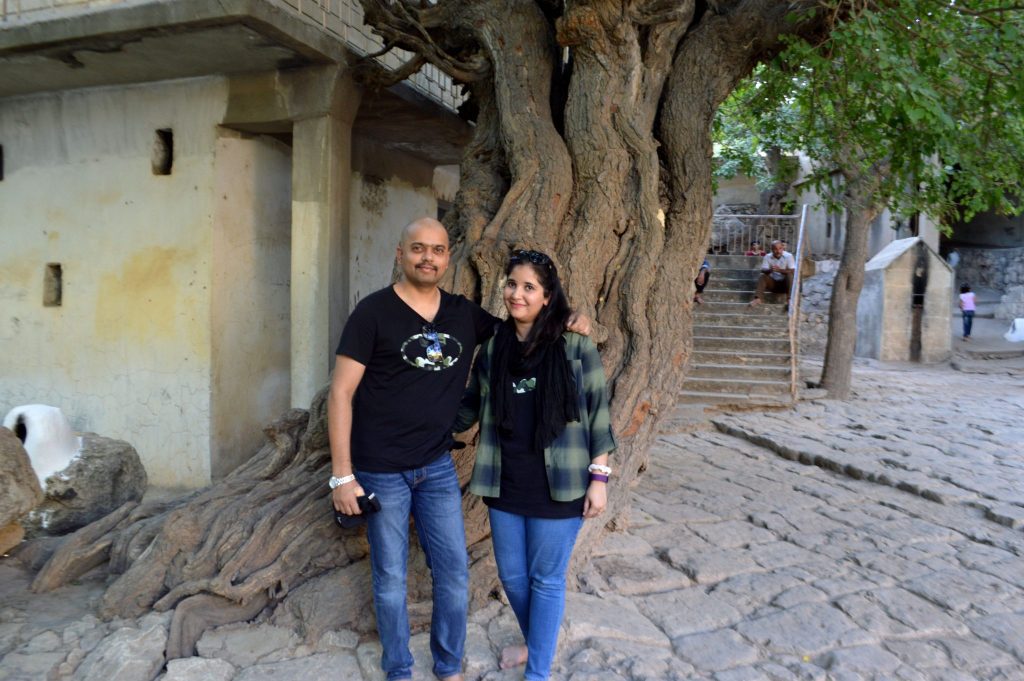
Day trip at Lalish, Iraq’s Yazidi temple
In general, we found Yazidis to be very friendly and peaceful people. Not only were they very hospitable, they were also very glad to host us and show us their temples and explain to us their customs. The temple is situated in a very far flung, deserted area, but once you get there, the hustle and bustle is almost contagious! Our new friend, Mr Dakhel, very generously showed us around the whole place and at the end, brought his son to meet us, who was a friendly child. We thank them for making our trip memorable and worthwhile.
I am thankful to Allah for giving me such unique experiences, and as a writer and someone who is committed to her readers, I will do my best to write down all that I see around me.
This post is meant for awareness purposes. We have been fortunate enough to be able to go to their holiest and oldest templates.
If you like this post, please let me know in the comments section below :)
[1] – Source
[adinserter block="1"]

